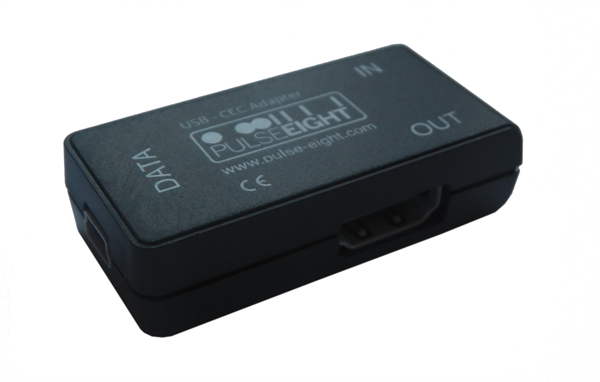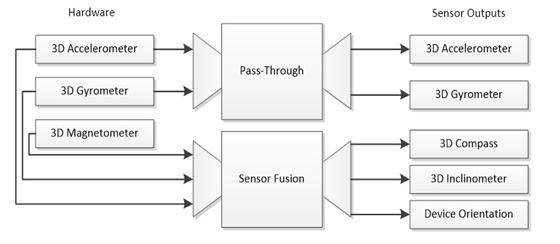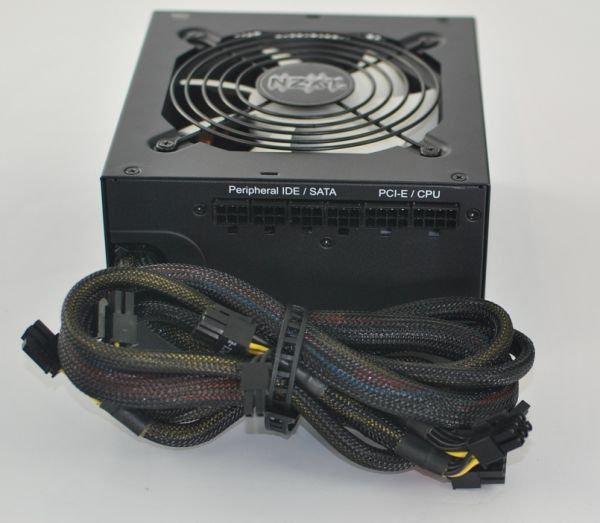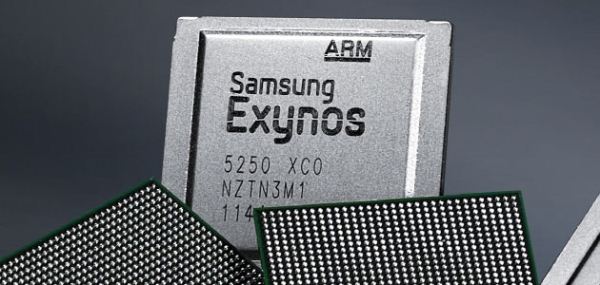Results 1,501 to 1,510 of 12091
Thread: Anandtech News
-
01-23-12, 03:50 PM #1501
Anandtech: Samsung Updates the Firmware of SSD 830 Series, Fixes BSOD Issue
This seems to be a month of SSD firmware updates. Less than two weeks ago, Crucial released a firmware update to fix the issue that caused BSODs after 5184 hours of operation. Today, OCZ released a firmware update for Octane that improved its random write performance. Samsung also joins the chorus and they have released a firmware update, or actually two updates, for their SSD 830 Series
The first update, named as CXM02B1Q, was actually released two weeks ago. Its release went mostly unnoticed due to CES, hence we never saw it until today. The release notes state that the update fixes a BSOD or hang issue when waking the computer up from hibernation mode. The 830 Series has generally been said to be one of the most reliable SATA 6Gb/s SSDs, and while this issue doesn't seem to be widespread, it's still an issue that affected some users. Samsung also claims that the update fixes partition issues with some enclosures and laptops.
The second update, CXM03B1Q, was released last Thursday and it's identical to the earlier update, but with improved compatibility and stability of the update tool. You can download the latest firmware for the Samsung 830, and as usual we recommend backing up critical data before flashing.
More...
-
01-23-12, 05:00 PM #1502
Anandtech: VLC 'Hack' for Encrypted Blu-ray Playback Capability
VLC is one of the most widely used media players. It was one of the first open source media players to get encrypted DVD playback capability, and now, it looks like the time has come for Blu-ray playback capability also.
Playback of unencrypted Blu-ray ISOs and folder structures has been possible without menus since VLC 1.2. VLC also has a GPLed open source library for the implementation of the AACS specifications. From the end-user's perspective, the big missing piece of the puzzle was the AACS keys database and how to get it integrated with the VLC installation. A simple Google search was enough to reveal the key (pun intended).
The above configuration should help people with the playback of most of the older Blu-rays, while the more recent ones could be a hit or a miss. Will this be enough to replace commercial Blu-ray players like the ones from ArcSoft, Corel or Cyberlink? Unfortunately, that is still quite some time off. The following aspects need to be resolved for that to happen:
- Audio codecs: There are no open source DTS-HD decoders available. VLC will only decode the Dolby Digital / Dolby TrueHD / LPCM / core DTS tracks in the audio stream. HD audio bitstreaming is also not currently supported.
- PiP features: There is no support for Blu-ray Picture-in-Picture (PiP) features yet, but this should be possible considering that the VLM already supports generation of PiP output.
- BD-Live: It can be safely said that VLC will probably never get BD-Live features which require BDA licensing. That said, I am not really sure BD-Live features are actually beneficial to the consumers in any way (I would love to hear feedback from readers on this).
- Menu functionality: This is probably the most requested feature when one analyzes Blu-ray playback support. Fortunately, a recent tweet from a VLC developer indicates that a lot of progress has been made towards this functionality. It should get integrated into the main branch in time for the release of VLC 2.1 / 3.0. We are keeping a close watch on the development of this feature for VLC.
Blu-ray Menu Functionality in VLC (Courtesy: Hugo Beauzée-Luyssen)The AACS keys will never be part of the official VLC releases (since it enables copy protection circumvention), but open source support for Blu-ray playback is bound to be a boost for the format amongst the consumers (though the licensing entities are going to fret the loss of revenue). If VLC gets full menu support along with HD audio bitstreaming for unprotected Blu-ray ISOs, that will be a huge step forward for the Blu-ray format.
More...
-
01-24-12, 01:10 AM #1503
Anandtech: ASRock X79 Extreme9 Review - Price For Performance?
When you pay more for a product, you expect a better level of everything - performance, features, support. In a motherboard, I'd want all the upgrades - top line audio, overclockability, superior software, better USB 3.0 / SATA 6 Gbps controllers, and so on. The ASRock X79 Extreme9's party piece is the bundled 'Game Blaster' - a PCIe x1 card with Creative Sound Core3D Audio powered by a quad core audio processor and an additional Broadcom Gigabit LAN port. All in at $360 MSRP, today we review the Extreme9 to see if it fits into the enthusiast of enthusiast price segments. Read on for the full review.
More...
-
01-24-12, 03:13 AM #1504
Anandtech: Antec Three Hundred Two: Stay Cool, Budget Enthusiasts
While flagship enclosures are certainly interesting and there are some great deals to be had even just north of $100, competition south of that border is mighty fierce and only becomes more so as manufacturers refresh their lineups with the latest trends and advances in chassis design. We've seen a lot of great options for end users looking to save some scratch, but we haven't had a chance to see what Antec can do in this market...until now. Antec is launching their new Three Hundred Two chassis, and if you're an enthusiast on a budget looking for the best cooling you can get without spending up for it, this may be the case for you.
More...
-
01-24-12, 07:00 PM #1505
Anandtech: Pulse-Eight USB CEC Adapter Review
Pulse-Eight is one of the commercial vendors tracing their roots to XBMC. Boxee is another company with XBMC roots, but, unlike Boxee, Pulse-Eight concentrates more on the hardware aspects. The PulseBox, a Brazos based HTPC, is one of their products, but they also have a number of other HTPC accessories like Bluetooth mini-keyboards and RF remotes in their catalog. However, their most interesting product is the USB CEC Adapter. Almost none of the GPUs in the market have CEC functionality embedded, and this makes them quite unfriendly for integration in a home theater with a single remote control.
The USB CEC adapter from Pulse-Eight aims at solving this issue. As long as you have a TV or receiver compatible with HDMI CEC, you can use that remote to control XBMC on your HTPC, or, with software support, also be able to control other applications. What exactly is CEC and how does it work? What is inside the Pulse-Eight's USB CEC adapter, and how does one get it up and running with XBMC Eden? Can the USB CEC adapter be built into future HTPCs? Read on to find out the answers.
More...
-
01-25-12, 09:11 AM #1506
Anandtech: AMD Q4’11 & FY 2011 Earnings Report: 1.69B Revenue For Q4, 6.57B Revenue F
Late yesterday AMD released their earnings report for Q4 2011 and the entirety of 2011. 2011 was an important year for AMD as they finally shipped their first APUs (integrated CPU/GPU), the TSMC-produced ultra-mobile Brazos APU earlier in the year, and the GlobalFoundries produced Llano desktop/mobile APU in the summer. At the same time it was the second year that AMD has operated as a fabless company, and the first in which a new process node (32nm) was delivered by the now-independent GlobalFoundries. However it was also a year of turmoil, with long-time AMD staffer turned-CEO Dirk Meyer resigning at the start of the year, followed up by outsider Rory Read taking the helm of AMD in August.
For 2011, AMD brought in $6.57 billion in revenue, with a net income of $491 million, versus $6.49B in revenue and $471M in 2010; or in other words AMD was flat on the year. Meanwhile for the all-important Q4 and the holiday sales that go with it, AMD earned $1.69B, but took a net loss of $177M. This compares to $1.65B of revenue and a net income of $375M for Q4 2010, making Q4 effectively as flat as the year itself in revenue, but far less profitable.
So what drove AMD’s earnings? Starting with a focus on Q4, the single biggest factor here is that AMD has once again taken a substantial charge related to GloFo. Even though GloFo operates independently, AMD continues to own 8.8% of the company, which means the status of GloFo is reflected in AMD’s earnings in some cases. To that end, AMD took a $209M “impairment of investment” charge reflecting the loss of value of GloFo, making it the primary reason the company slipped into the red for the quarter. As this is a charge for recognizing the loss of value of an asset, AMD has not actually lost $209M, but it was booked as such. Meanwhile AMD also took a restructuring charge in Q4 related to their workforce reduction, which cost the company a further $98M. Altogether the company took $315M in one-time losses for Q4; their net income excluding those loses would have been $138M.AMD 2011 Financial Results Q4'2011 Q4'2010 FY2011 FY2010 Revenue $1.69B $1.65B $6.57B $6.49B Net Income -$177M $375M $491M $471M
In terms of product shipments, Q4 marked the launch of AMD’s Bulldozer architecture. AMD technically began shipping Bulldozer products for revenue in Q3, but Q4 was the first complete quarter. For that reason server and chipset revenue grew by double-digits over Q3, while desktop Bulldozer sales went unmentioned in AMD’s report. Meanwhile compared to Q4 of 2010 AMD’s CPU & chipset revenue was up slightly, with the bulk of the difference due to higher mobile CPU (Brazos and Llano) and chipset sales. Unfortunately for AMD this didn’t do anything to help their ASP for the quarter, and a result it’s flat versus 2010.
In discussing Q4 2010, AMD mentioned that they have been impacted by the hard drive shortage that started late last year. As virtually all CPUs are sold with new systems, AMD can only ship as many CPUs as their partners have hard drives to equip those systems with, creating a hard drive bottleneck in PC product. As a result not only does AMD face a limit in sales, but because the remaining hard drives are more expensive, PC manufacturers are cutting corners to make up the difference. NVIDIA and Intel have also been impacted by this, and as we’ll see it’s not the CPU division that’s taking the largest hit from the shortage.
Meanwhile for the entire year AMD ended up shipping 30M APUs. Most of AMD’s APU sales for the year were Brazos (a specific breakdown was not provided), reflecting the fact that Brazos has been a significant hit for the company, getting them into nettops and other cheap small form factor designs. The company-wide gross margin was 46%, which was up a point from 2010.
GPUs
On the GPU side however things were less rosy. As we’ve noted before APU sales eat into GPU sales, not only because APUs displace the need for low-end GPUs in some cases, but because APU revenue is booked alongside CPU revenue instead of GPU revenue.
For Q4 2011 AMD’s graphics division had 382M in revenue and $27M in operating income, versus $424M revenue and $68M operating income the year before. On a yearly basis AMD booked $1.56B in revenue and $51M in operating income, compared to $1.66B and $149M respectively for 2010.AMD 2011 Graphics Division Financial Results Q4'2011 Q4'2010 FY2011 FY2010 Revenue $382M $424M $1.56B $1.66B Operating Income $27M $68M $51M $149M
For AMD’s graphics division there were a few different driving factors for the quarter and for the year. From a product standpoint AMD launched the Radeon HD 6000 series early into the quarter last year, while the first true 7000 series part (Tahiti) did not launch until 2012 and only started shipping for revenue very late into 2011. Still, it was enough to have a significant impact on AMD’s GPU ASP, increasing it over 2010’s ASP even with the limited number of new products.
Meanwhile the biggest loser here was the desktop GPU segment, thanks both to a general decrease in desktop sales and the hard drive shortage. Compared to CPU sales desktop GPU sales in particular are being significantly impacted by the hard drive shortage as fewer desktop PCs are being sold and manufacturers cut back on or remove the discrete GPU entirely to offset higher hard drive prices. As a result AMD’s graphics revenue is down 10% year-over-year, with both dGPU sales to partners and direct board sales (FirePro) sliding versus 2010.
What’s Next
While AMD has officially closed the book on 2011, AMD expects to continue to be dogged by some 2011 issues for some time to come. The hard drive shortage in particular is going to extend through at least the first part of 2012 (no one seems to be quite sure when it will end), which is going to continue to hammer sales. At the same time AMD will be launching several new products in the next half year, including two new GCN GPUs (Pitcairn and Cape Verde), and of course their first Bulldozer APU, Trinity.
The bigger question though is what AMD’s long-term plans starting in 2012 will be. It’s widely expected that Rory Reed will announce a major new strategy for the company at AMD’s Financial Analyst Day 2012 next week, which would have a significant impact on the future of some product lines. As to what that might be, AMD’s own earnings report reiterated something the company said during last year’s workforce reduction: "the Company plans to reinvest a significant portion of the anticipated savings to fund initiatives designed to accelerate AMD's strategies for lower power, emerging markets, and the cloud". We’ll be at AMD’s Financial Analyst Day next week to find out just what AMD’s new strategy might be, so stay tuned.
More...
-
01-25-12, 08:10 PM #1507
Anandtech: Windows 8 Motion Sensor Support Detailed
Windows 8's tablet-centric focus means that it's going to pick up a lot of new features to support hardware particular to those devices - Microsoft's Gavin Gear took to the Building Windows 8 blog today to explain more about how Windows 8 will treat accelerometers, gyrometers, and other sensors when they're present in hardware.
Some of Windows 8's sensor support is basic stuff that has been in most modern tablets and laptops for awhile now - support for ambient light sensors (already present in Windows 7) and automatic screen orientation rotation is pretty old hat at this point. Microsoft's treatment of 3D motion sensors is more interesting - integrating a gyroscope into your hardware is one thing, but making software that filters out movement "noise" (for example, slight shaking of a tablet as a user breathes or walks) while still responding to input quickly and smoothly is quite another.
To solve this problem, Microsoft has implemented something it calls "sensor fusion," which takes raw data from an accelerometer, gyrometer, and magnetometer and synthesizes it into an accurate 3D compass and 3D inclinometer, and also uses that input to detect device orientation. Apps that still want to use the unfiltered data from individual sensors (Microsoft's example use case was a pedometer) still have access to it, but apps that require more precision in motion can use this combination of movement sensors to get a better experience. Sensor APIs have been made available to and Metro app developers as part of the new Windows Runtime (WinRT), as well to traditional Win32 app developers.
To make use of these features, hardware manufacturers will need to implement sensors that meet Windows' certification guidelines. Sensors built to these standards, which were introduced to the USB-IF in July of 2011, will be supported by a class driver in Windows, meaning that they won't rely on third-party drivers to operate. Mobile broadband chips and USB 3.0 controllers are two other types of devices that will see new class drivers in Windows 8.
For more information, the full post is linked below for your convenience.
Source: Building Windows 8 blog
More...
-
01-25-12, 11:50 PM #1508
Anandtech: Capsule Review: Rosewill's RK-9000 Mechanical Keyboard
As enthusiasts and professionals we spend a lot of time checking out what's under the hood of the computers and devices we use, but thankfully more and more we're paying attention to how we actually interact with hardware, what the user experience is like. User experience has been a major selling point of Apple's products, but there's one place where even Apple has been a bit neglectful: the keyboard. On notebooks your options are limited, but on the desktop you have access to mechanical keyboards. Today we'll take a quick look at Rosewill's RK-9000 mechanical keyboard and see if it's worth the price premium.
More...
-
01-26-12, 07:30 PM #1509
Anandtech: NZXT HALE82 650W and 750W
NZXT is a well known provider of "eye-catching" cases and peripherals, but like many other brands they offer power supplies as well. These include the HALE90 series, their first 80 Plus Gold product to hit the market. While the HALE90 targets the high-end audience, NZXT also wants to cater to midrange users, and for that market they have their new HALE82 series that covers wattages from 650W to 850W. The rated output makes these models good for high-end single GPUs as well as moderate SLI and CrossFire systems. Features such as 80 Plus Bronze certification and modular cables are common these days, but such features say little about how good a PSU really is. Today, we're testing the 650W and 750W models, with our usual results on the following pages.
More...
-
01-27-12, 10:15 AM #1510
Anandtech: Samsung Exynos 5250 Begins Sampling – Mass Production in Q2 2012
Back in November, Samsung announced its next generation Exynos 5250 SoC based on ARM’s Cortex-A15 architecture. Samsung dropped the ball today during its earnings call that the Exynos 5250 has begun sampling and should hit mass production in Q2 2012
Just to recap, the Exynos 5250 is a 32nm dual-core Cortex-A15 SoC running at 2.0 Ghz. Memory bandwidth is a staggering 12.8 GB/s and allows it to drive up to WQXGA (2560x1600) resolution displays. As we reported back in November, compute performance should easily be twice that of the 1.5Ghz dual-core Cortex-A9-based Exynos 4210 and graphics performance is expected to be a four-fold improvement.
However, not much is known about the GPU at this moment; but if the Exynos 4210 was anything to go by, we could see ARM's Mali T-604 based on their new Midgard architecture handling the pixel pushing duties. The Exynos 4210 packed a Mali-400 MP4 GPU, while its predescessor, Hummingbird, used a PowerVR SGX540 GPU. Samsung does have licenses to other GPU designs from ARM and Imagination Technologies, so at this point, the GPU in the Exynos 5250 could be anybody's guess.
The next generation SoC race is definitely heating up with silicon from major players such as Qualcomm (Snapdragon S4 "Krait") and Texas Instruments (OMAP 5) all expected to ramp up production soon, with devices expected in Q3/Q4 2012. Of course, what Apple could be doing with its A6 chip is entirely another story.
Source: GSMArena
More...
Thread Information
Users Browsing this Thread
There are currently 14 users browsing this thread. (0 members and 14 guests)






 Quote
Quote
























Bookmarks